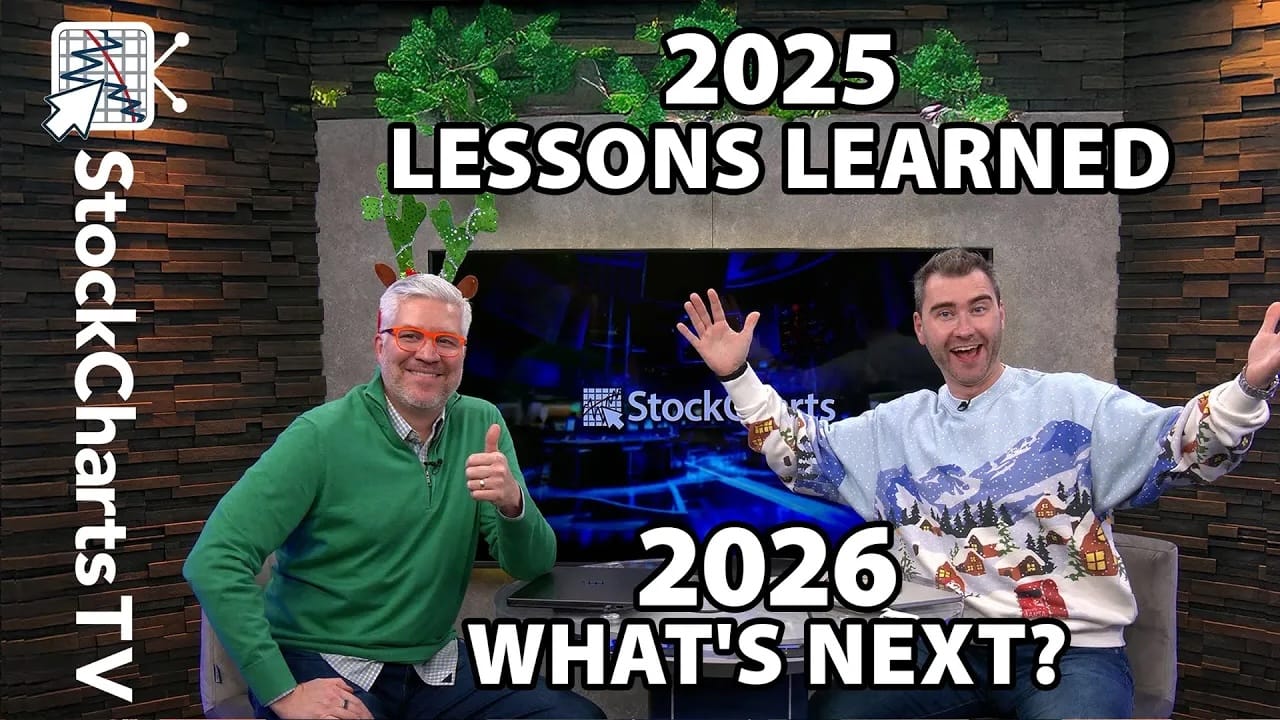CORN SURGES OFF SHALLOW RETRACEMENT -- WHEAT SURGES WITHIN CONSOLIDATION -- COFFEE PERKS UP AND CHALLENGES TREND LINE -- SUGAR BOUNCES OFF SUPPORT -- THE BEST EUROPEAN INDICATOR EVER -- FXE HITS RESISTANCE NEAR BROKEN SUPPORT
CORN SURGES OFF SHALLOW RETRACEMENT... Link for todays video. Corn dominated the summer news as the drought of the century grabbed lots of headlines. These headlines have largely faded, but the results of the drought may still linger. Chart 1 shows the Corn Fund (CORN) surging from mid June to mid August and then retracing around 38.2% of this advance. The Fibonacci Retracements Tool shows three retracements (38.2%, 50% and 61.8%). Relatively shallow retracements extend to the 38.2% line, while relatively deep retracements extend to the 61.8% line. The middle line (50%) represents the baseline scenario for a retracement or correction. On the price chart, CORN retraced 38.2% and then surged over the last two days. Even though a falling flag or wedge did not form, this surge off the shallow retracement could signal an end to the correction. There is resistance at 49 from the late September consolidation. Follow through above this level would suggest that the correction is ending and the uptrend resuming.

(click to view a live version of this chart)
Chart 1
WHEAT SURGES WITHIN CONSOLIDATION... Chart 2 shows the Wheat Fund (WEAT) surging in early summer and then consolidating the last three months. A flat flag-like consolidation took hold with resistance at 25.50 and support at 23.40. Also notice that the Bollinger Bands narrowed over the last two months as volatility contracted. This is another sign that a move could be forthcoming. I added Bollinger Bands and then selected area as the style to show them as shaded. Chartists should watch the consolidation boundaries for the next directional clue. A break above resistance would signal a continuation of the summer surge. Failure to breakout and a break below support would argue for a deeper correction, perhaps back to broken resistance in the 21.50 area. Note that the spot commodity prices are shown for reference in the indicator window for both CORN and WEAT.

(click to view a live version of this chart)
Chart 2
COFFEE PERKS UP AND CHALLENGES TRIANGLE TREND LINE ... Coffee is also showing signs of life with a breakout within a triangle. Chart 3 shows the Coffee Fund (JO) in a downtrend over the past year. Signs of firmness are starting to emerge as the ETN consolidated around 40 the last four months. A triangle is taking shape with a higher low in early September and a lower high in late September. JO surged in early September and broke a minor resistance level within the triangle. This broken resistance turned into support around 40. A follow above the mid September high would produce a breakout.

(click to view a live version of this chart)
Chart 3
SUGAR SURGES OFF SUPPORT... Chart 4 shows the Sugar ETN (SGG) hitting support around 70 in September and surging to resistance from the mid September high on Monday. As with coffee, SGG remains in a bigger downtrend over the past year. However, there have been some rather large swings (blue dotted lines). Todays surge reinforces support and a breakout would signal a new upswing.

(click to view a live version of this chart)
Chart 4
THE BEST EUROZONE INDICATOR EVER... This indicator is not the Holy Grail, and perhaps not the best ever, but it is the best we can get when it comes to understanding investor sentiment towards Europe. Before the unveiling, note that trying to interpret press reports and EU communiqus is a lesson in futility. Moreover, October promises to be a big month for Eurozone news because EU finance ministers meet on October 8-9 and there is a heads of state EU summit on October 18-19. An uptrend in news flow means the markets may be quite volatile in the coming weeks. Chartists would likely be better off watching the charts and ignoring most of the news. In particular, I would just follow the European Top 100 Index for clues. Pro Euro players are winning the day when European stocks advance. Euro skeptics are winning when European stocks decline. Currently, the pro Euro party is winning because the European Top 100 Index ($EUR) remains in an uptrend. At the end of the day, price action matters a lot more than press action.

(click to view a live version of this chart)
Chart 5
Chart 5 shows the European Top 100 Index bottoming in early June and moving higher the last four months. The index hit resistance from the spring highs as it declined rather sharply late last week. Despite this decline, support from the early September low has yet to be broken and the index bounced on Monday. A break below support would reverse the uptrend and this would be negative for US stocks. The first indicator window shows the S&P 500. Notice how $EUR broke down in early April and $SPX broke down in early May, a few weeks later. $EUR broke down ahead of $SPX. The lower indicator window shows the Correlation Coefficient ($EUR,$SPX). Another breakdown in $EUR would be negative for $SPX because these two share a strong positive correlation. Chart 6 shows the German DAX Index ($DAX) for reference and the late August low marking key support.

(click to view a live version of this chart)
Chart 6
FXE HITS RESISTANCE NEAR BROKEN SUPPORT... The S&P 500 and the Euro Currency Trust (FXE) are positively correlated for the most part, but this correlation is not as strong as the correlation with the European Top 100 Index. Chart 7 shows FXE in a one year downtrend and the indicator window shows the S&P 500 in a one year uptrend. The thin blue lines extend from the close one year ago to the current close. An upward slopping line reflects an uptrend, while a downward sloping line reflects a downtrend. It is as simple as that. Note that the S&P 500 has managed an advance in the face of a weak Euro over the past year. Also note that the Euro hit resistance from broken support and the 61.80% retracement.

(click to view a live version of this chart)
Chart 7
The indicator window shows the Correlation Coefficient (FXE,$SPX) spending most of its time in positive territory over the past year. This positive relationship does not seem to jibe with the negative relationship of the blue dotted trend lines. The difference resides in the calculation of the Correlation Coefficient. 1-period correlation is +1 when the S&P 500 and Euro Currency Trust both rise. 1-period correlation is -1 when one falls and the other rises. The magnitude of the rise of fall does not matter. In other words, a 3% advance in $SPX and a 1% advance in FXE means a +1 correlation. A 3% advance in $SPX and a -1% decline in FXE means a -1 correlation. A 20-day correlation is a statistical measure of these 1-period correlations over a 20-day period. You can learn more about this indicator in our ChartSchool article. Chart 8 shows the US Dollar Fund (UUP) bouncing back after its support break to set a possible bear trap. A move above 22.10 is needed to show follow through and break resistance.












